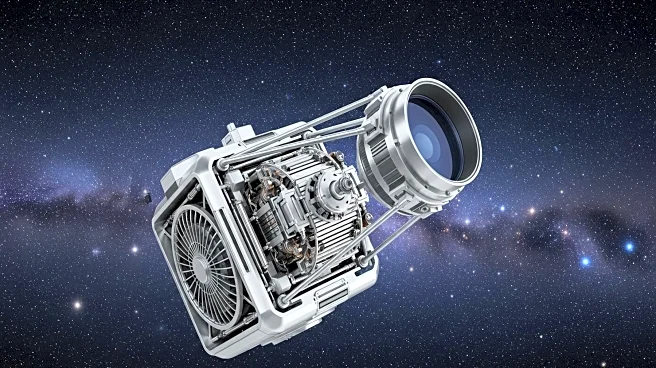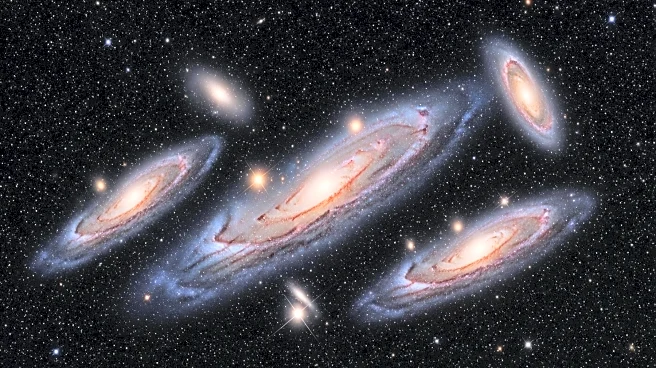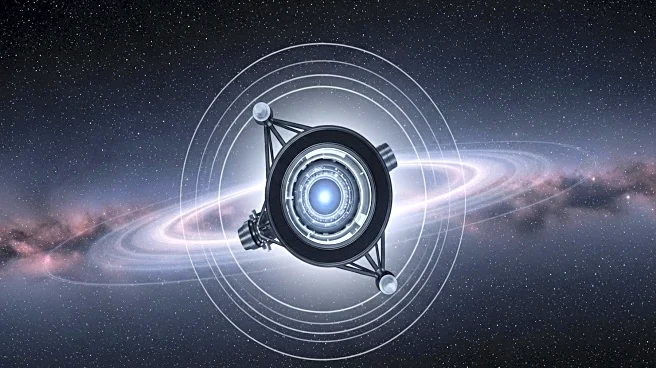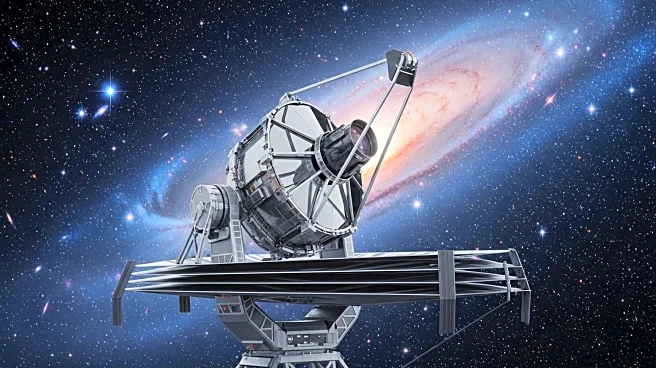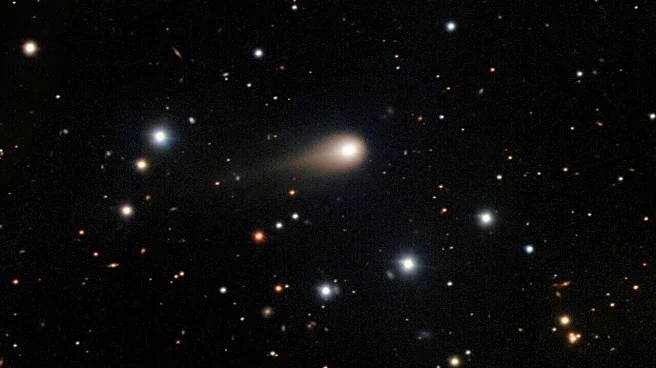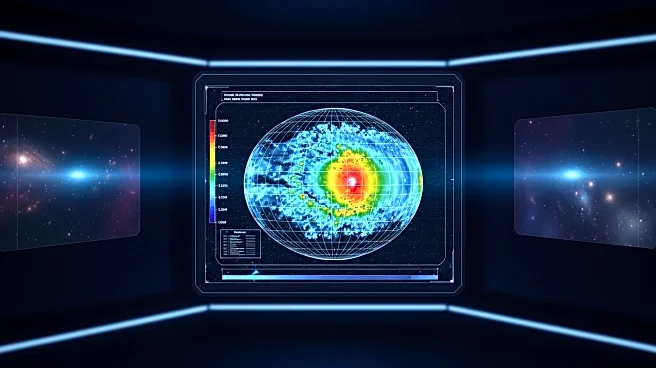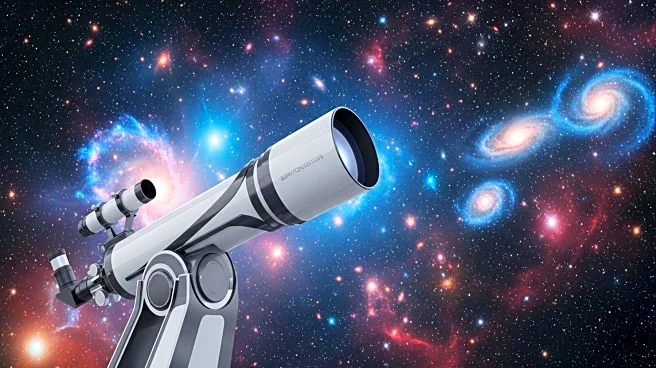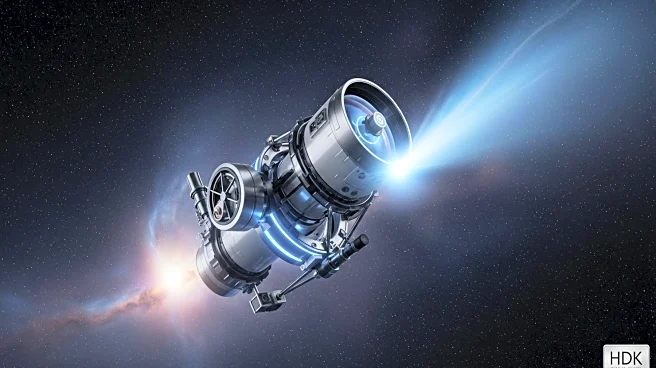What's Happening?
NASA has been studying active galactic nuclei (AGN), which are supermassive black holes at the center of galaxies emitting jets and winds. These emissions are detected across the electromagnetic spectrum, from X-rays to radio waves. AGN are classified into various types, including quasars and Seyfert galaxies, based on their distance from Earth and the brightness of their emissions. The James Webb Space Telescope (JWST) is providing high-resolution infrared data, allowing researchers to study these phenomena in greater detail. This research aims to understand the role of AGN in galaxy formation and evolution.
Why It's Important?
Understanding AGN is crucial for comprehending the formation and evolution of galaxies. These supermassive black holes influence star formation and the distribution of matter within galaxies. By studying AGN, scientists can gain insights into the early universe and the processes that shaped modern galaxies. The data from JWST is particularly valuable as it allows researchers to observe distant galaxies and their AGN, providing a clearer picture of the universe's history.
What's Next?
Researchers will continue to analyze data from JWST to explore the relationship between AGN and their host galaxies. Future observations may reveal more about the mass and behavior of these black holes, offering deeper insights into galaxy formation. As more targets are observed, scientists hope to establish connections between the masses of distant galaxies and their black holes, similar to those seen in the nearby universe.
Beyond the Headlines
The study of AGN also touches on broader questions about the universe's structure and the role of black holes in cosmic evolution. Ethical considerations arise in the allocation of resources for such research, balancing the pursuit of knowledge with practical applications. The cultural impact of these discoveries can influence public interest in space exploration and science education.



